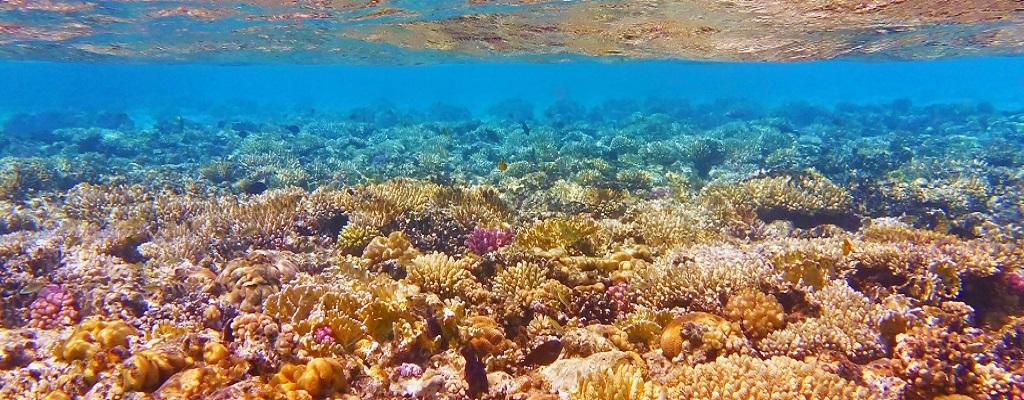

Mass bleaching episodes in 2016 and 2017 killed about half the corals in the central and northern sections of the reef



While the Great Barrier Reef has witnessed record bleaching in the recent years, it is in good condition and has a “vibrant future”, claimed the Great Barrier Reef Marine Park Authority (GBRMPA).
The GBRMPA had, in a recent five-year report, predicted the reef's condition to turn “very poor”, if climate change is not mitigated.
But, in a Senate hearing on October 21,2019, GBRMPA Chief Executive Joshua Thomas said the region continues to support beautiful corals and abundant marine life, the Australian reported on October 22.
“The reef is a vast estate and many areas remain vibrant and ecologically robust,” Thomas said.
“The outlook report was an assessment of the likely condition of the reef if global greenhouse gas emissions is not reduced and the water quality of the reef is not improved,” he noted.
GBRMPA's claims echoed Environment Minister Sussan Ley’s statement that the reef is “good” and has “a vibrant future”.
Thomas said Ley had been “referring to the fact there are many areas of the reef that remain vibrant and worth visiting and we support that statement”.
However, he added: “it is also true that the reef over the past five years has been subjected to unprecedented changes, including those bleaching events in 2016-17.”
Further, the estimate of “very poor” was a long-term outlook predicted based on evidence of the impacts of climate change on current greenhouse gas emissions trajectories, said David Wachenfeld, chief scientist at the GBRMPA.
However, Pauline Hanson, an Australian politician refuted that coral bleaching is linked to heatwaves, the media reported. She argued that bleaching of corals is a natural occurrence.
“You're saying that coral bleaching is affected by water temperatures. Yet around Indonesia, closer to the equator ... where the water temperatures are 29 degrees Celsius, it's a known fact that coral actually grows faster and more prolific in warmer temperatures,” she told Wachenfeld.
“The fact that corals in Indonesia could withstand higher temperatures than corals on the central Great Barrier Reef is of no benefit to the corals of the central Great Barrier Reef when they die,” Wachenfeld told the senate.
Meanwhile, the GBRMPA is trying to weed out crown-of-thorns starfish and improve water quality in catchments while urging for greater global action on climate change, the report stated.
The Great Barrier Reef is the habitat for thousands of species of fish, dolphins, sharks and whales that thrive in a habitat that is under huge amounts of stress. The reef has been through mass bleaching episodes in 1998, 2002, 2016 and 2017.
In the two most recent back-to-back bleaching episodes, about half the corals died in the central and northern sections of the reef.
The United Nations Educational, Scientific and Cultural Organization had, in 2015, has recommended that the Great Barrier Reef should be termed as World Heritage in Danger site.
The reef has been a world heritage protected site since 1981 and has been facing threats from agricultural run-off, large-scale industrial development and climate change.
We are a voice to you; you have been a support to us. Together we build journalism that is independent, credible and fearless. You can further help us by making a donation. This will mean a lot for our ability to bring you news, perspectives and analysis from the ground so that we can make change together.
India Environment Portal Resources :

Comments are moderated and will be published only after the site moderator’s approval. Please use a genuine email ID and provide your name. Selected comments may also be used in the ‘Letters’ section of the Down To Earth print edition.